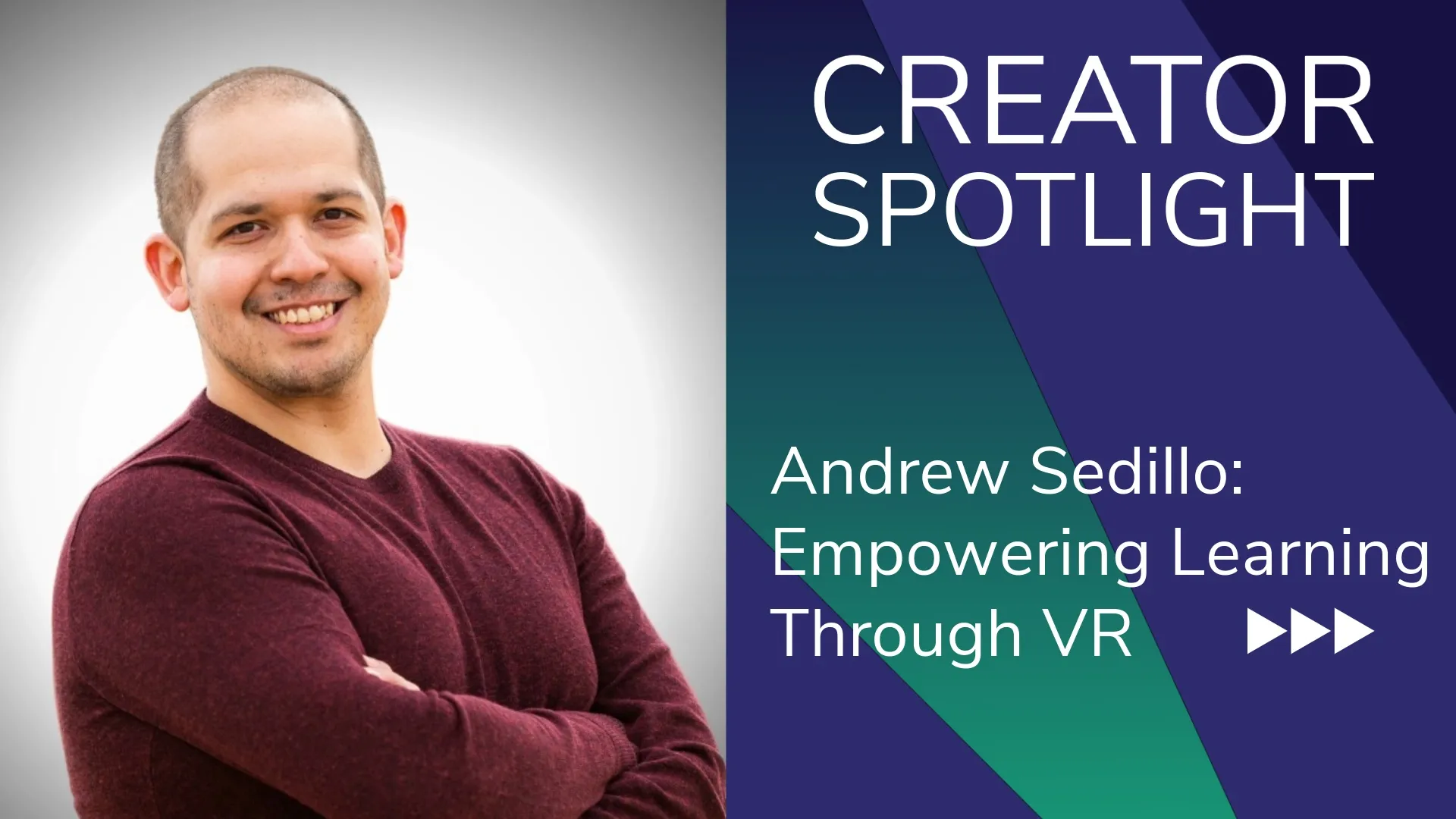
Andrew Sedillo, the Director of Microcredentials Instructional Design at New Mexico State University (NMSU), is revolutionizing education by integrating cutting-edge virtual reality (VR) technologies into traditional and online learning environments. Sedillo’s work with microcredentials and his leadership in the university’s metaverse program have opened new pathways for student engagement and innovative teaching practices.
Virtual reality allows us to move beyond cookie-cutter tutorials and design truly tailored, immersive learning experiences that meet the unique needs of every student.
Microcredentials and VR: A Modern Approach to Learning
Microcredentials, as Sedillo explains, are concise, skill-focused courses designed to address specific competencies. At NMSU, Sedillo oversees the development and implementation of these programs. Beyond this, his contributions to the university’s metaverse initiative stand out as a testament to his dedication to transforming education.
NMSU’s metaverse program features a digital twin of the campus, a virtual replica where students and faculty can interact in immersive ways. “We help faculty identify areas where virtual reality can support their courses and learning objectives,” Sedillo shares. This approach is particularly impactful for online students, providing them with the same level of engagement and interaction that on-campus students enjoy.
The Role of VR in Enhancing Online Education
Sedillo highlights the unique potential of VR to create distraction-free, immersive environments for online learners. In VR, students can participate in live sessions, simulations, and interactive activities that closely mimic real-world experiences. For instance, criminal justice students can investigate virtual crime scenes, and science students can perform virtual experiments—all within the metaverse.
The initiative began three years ago under the vision of NMSU Chancellor Dr. Kollman, who sought to acquire virtual real estate to establish the metaverse campus. Today, the program supports a wide range of disciplines, including criminal justice, business, Spanish, and dental studies. Sedillo’s pioneering use of VR in his own courses has inspired other instructors to adopt these technologies, significantly expanding the university’s VR offerings.
A Collaborative Tool for Instructional Designers
One of Sedillo’s standout VR creations is the “Instructional Designer Kitchen,” built using Zoe Immersive. Designed as a professional development tool, this experience equips instructional designers with the skills to create immersive learning experiences.
The “Instructional Designer Kitchen” combines fun and practicality, using interactive menu items to guide designers through key VR concepts. For example, participants can:
- Learn about immersion and interactivity by placing planets on a shelf.
- Build relationships by playing virtual ping pong.
- Explore simulation and role-play through activities like serving virtual customers.
- Understand choice-driven learning by selecting and categorizing virtual items.
- Engage in safety assessments through playful scenarios, such as shooting virtual hazards into a basketball hoop.
This innovative approach not only helps instructional designers grasp VR’s potential but also provides them with a reusable tool to educate subject matter experts.
Jump into the headset and play until you start understanding the possibilities of VR, which are endless. There's just a lot of opportunity to create things and make things come to life in ways you never thought possible.
The Benefits and Accessibility of VR
Sedillo emphasizes the cost-effectiveness and adaptability of creating custom VR lessons. “When you work with a subject matter expert, you understand their audience and learning objectives,” he says. “This allows for the flexibility to design tailored learning experiences, moving beyond cookie-cutter tutorials.”
Zoe Immersive, in particular, impressed Sedillo with its ease of use. Unlike other tools requiring extensive back-and-forth between a headset and computer, Zoe streamlines the process, making VR creation accessible to educators and instructional designers alike.
Advice for Educators Venturing into VR
Sedillo’s advice for educators is straightforward: start with hands-on experience. “Get a headset and explore VR,” he urges. Whether through gaming, meditation apps, or educational simulations, experiencing VR firsthand helps educators envision its potential for teaching. Once comfortable with the medium, tools like Zoe can unlock endless possibilities for creating immersive lessons.
Transforming Education, One VR Experience at a Time
Through his leadership at NMSU, Andrew Sedillo is not only advancing the adoption of VR in education but also redefining how students and educators interact in the digital age. His work demonstrates the power of immersive technology to break down barriers, foster engagement, and create meaningful, hands-on learning opportunities for all.
Zoe Immersive isn’t just a platform—it’s a catalyst for redefining education in VR. Whether you’re an educator, student, or creator, Zoe opens doors to uncharted creative landscapes.
Ready to bring your ideas to life in VR? Explore the Zoe platform today and start building the future. Apply for our Zoe Creator Program, which runs periodically throughout the year and is designed to take you through building your first immersive experience from the ground up.


